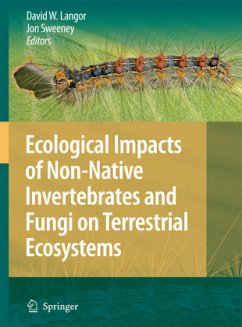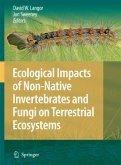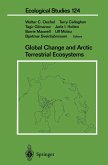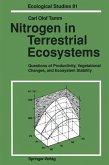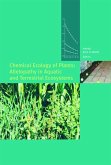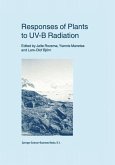Since the arrival of Europeans about 500 years ago, an estimated 50,000 non-native species have been introduced to North America (including Hawaii). Non-native species figure prominently in our lives, often as ornamentals, sources of food or pests. Although many introduced species are beneficial, there is increasing awareness of the enormous economic costs associated with non-native pests. In contrast, the ecological impacts of non-native species have received much less public and scientific attention, despite the fact that invasion by exotic species ranks second to habitat destruction as a cause of species loss. In particular, there is little information about the ecological impacts of hyper-diverse groups such as terrestrial fungi and invertebrates.
A science symposium, Ecological impacts of non-native invertebrates and fungi on terrestrial ecosystems, held in 2006, brought together scientists from the USA and Canada to review the state of knowledge in this field of work. Additional reviews were solicited following the symposium. The resulting set of review/synthesis papers and case studies represents a cross-section of work on ecological impacts of non-native terrestrial invertebrates and fungi. Although there is a strong focus on Canadian work, there is also significant presentation of work in the northern USA and Europe.
A science symposium, Ecological impacts of non-native invertebrates and fungi on terrestrial ecosystems, held in 2006, brought together scientists from the USA and Canada to review the state of knowledge in this field of work. Additional reviews were solicited following the symposium. The resulting set of review/synthesis papers and case studies represents a cross-section of work on ecological impacts of non-native terrestrial invertebrates and fungi. Although there is a strong focus on Canadian work, there is also significant presentation of work in the northern USA and Europe.
Aus den Rezensionen: "... Das Buch gibt einen guten Überblick über invasive Pilze und Insekten in Kanada und ihren Einfluss auf Ökosysteme ... Repräsentative Fallstudien bearbeiten invasive Arten europäischen Ursprungs ... Der Fokus der angewandten Aspekte der insgesamt 13 Beiträge liegt ganz klar in Kanada. Die englische Sprache der Aufsätze nehmen Interessierte sicherlich gern in Kauf. Die Stärken der Aufsätze liegen in der Aktualität ihrer Bearbeitung, einer sehr umfassend recherchierten Literatur und in reviewartigen Berichten über erfolgreiche Managementstrategie, Toleranz, Duldung bei geringer Populationsdichte und Ausrottung ..." (Klaus Lunau, in: Entomologie heute, November/2009, Vol. 21, S. 196)

